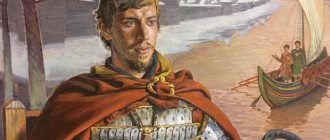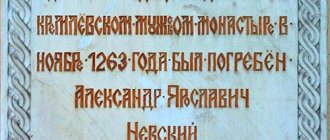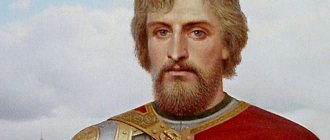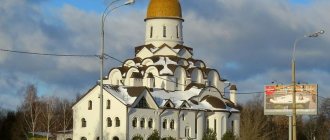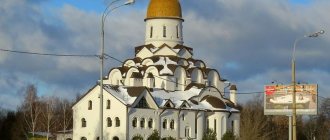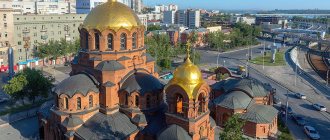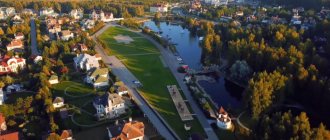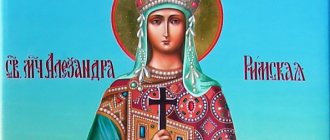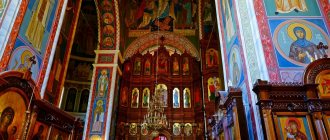There is an important holiday in the calendar of the Russian Orthodox Church, which is celebrated on September 12. This is the day of the transfer of the relics of the holy noble prince Alexander Nevsky. Such a significant event took place in 1723-1724, and the initiator of the movement of the relics of the famous prince was the equally famous Russian Tsar, Peter I.
According to his decision, the remains of the outstanding commander, one of the most revered Orthodox saints, were to be located not in Moscow, but in the new capital - St. Petersburg. But why was Peter so interested in the transfer of relics? Was there really some secret hidden in them, known to the king? Let's take a virtual trip into the past and find out how things really were.
Russian prince-victor
Grand Duke Alexander Yaroslavich, nicknamed Nevsky, lived a short life by modern standards - only forty-three years. However, already at sixteen he was called to reign, at twenty he entered into battle and won a victory over the Swedes on the Neva, and two years later he became a participant and winner of the famous battle on Lake Peipsi.
Despite the fact that he ruled in Rus' during the difficult times of the invasion of the Mongol-Tatar hordes, Nevsky managed to prove himself both as a commander and as a diplomat and subtle politician.
“Holy Blessed Prince Alexander Nevsky” / © Klimova Natalya
Today, Alexander Nevsky is often accused of choosing the wrong position and making concessions at the expense of infringing on the interests of Russia. In my opinion, he, like any responsible ruler, tried to establish relations with a variety of parties - both with the Pope and with the Golden Horde.
There are a lot of opinions, but the main thing is that the Orthodox Church has revered Nevsky as a saint for many centuries. His relics were treated as a great shrine, giving strength and fortitude to the Russian people, protecting their native land.
The concept and creation of the monastery
Despite his daring and even sometimes riotous character, Peter the Great took a responsible approach to resolving issues related to the spiritual life of the people. Soon after the capture of Vyborg, in 1710, the tsar examined its surroundings and determined where the future monastery in the Name of the Holy Life-Giving Trinity would be built.
In 1713, a solemn liturgy was held in a wooden church, consecrated in honor of the Annunciation of the Blessed Virgin Mary. Subsequently, the monastery was connected with the new city by a road that today is known as Nevsky Prospekt.
Construction plan for the monastery, 1720s
The development of St. Petersburg proceeded incredibly quickly. Just a few years after the start of construction work, this place was a small European-style city.
But Peter wanted more - he turned St. Petersburg into a new capital. When a large temple appeared in the city, named in the Name of St. Alexander Nevsky, the tsar seriously thought about transferring the relics of the prince.
Thus, Russia captured the eastern tip of the Gulf of Finland, its entire southern coast with the Gulf of Riga and the islands adjacent to the conquered shores. In this space were, not counting small ports, the rapidly growing Petersburg, with its strong guard - the island of Kotlin, and ancient trading cities: Vyborg, Narva, Revel (Tallinn) and Riga. Thanks to such useful acquisitions and the strong victorious fleet of Peter I, dominion of the Baltic Sea now passed from Sweden to Russia, which promised in the near future the expansion of trade, improved economic sales, the spread of education and the elevation of the political importance of the state. Victory in the Northern War promoted Russia to one of the largest European states.
On September 10, 1721, celebrations were held in Moscow on the occasion of the Peace of Nystadt, and the day of its signing - August 30 (September 12, new style) - in 1723, it was decided to consecrate the relics of the blessed Prince Alexander Nevsky from Vladimir to St. Petersburg, which is still in 1712 it was declared the new capital. Peter I considered Saint Alexander Nevsky his heavenly patron and compared his victory over the Swedes in the Northern War with the victory of the noble prince, who won victory over the Swedish army at the confluence of the Neva and Izhora rivers on July 15, 1240. It is symbolic that in 1711, at the mouth of the Izhora River, by personal decree of Peter I, a wooden church was founded in the name of the holy noble prince Alexander Nevsky.
The church-wide glorification of Grand Duke Alexander Yaroslavich Nevsky, who died in the schema with the name Alexy on November 14, 1263 and was buried in the Vladimir Nativity Cathedral, took place under Metropolitan Macarius of Moscow. In addition, Peter I, who decided in 1704 to found a monastery on the banks of the Black River (now the territory of the Alexander Nevsky Lavra), was unable to carry out his plan for a long time due to ongoing hostilities. And only after the capture of Vyborg on June 13, 1710, Peter I ordered the construction of a monastery of the Life-Giving Trinity and the Holy Blessed Grand Duke Alexander Nevsky here.
The beginning of its existence of the Alexander Nevsky Monastery dates back to March 25, 1713, when the first wooden Annunciation Church of the monastery was consecrated and the first Divine Liturgy was served. The transfer of the relics of the blessed Prince Alexander Nevsky from Vladimir to the new capital in 1724 meant that Saint Alexander, along with the Apostle Peter, officially became the heavenly protector and patron of St. Petersburg.
The relics were carried in their hands so that everyone could pay homage to the saint. On August 18, 1723, a solemn meeting of the ark with the relics took place in Moscow, and on August 26 - in Tver. At the beginning of September, the holy relics were transferred across Lake Ilmen to Veliky Novgorod, after which the procession continued its journey towards Staraya Ladoga. Since they did not have time to arrive in the capital on the day of the conclusion of the Peace of Nystadt, Peter I decided to leave the ark with the relics in the St. Nicholas Church in Shlisselburg until next year.
On August 30 (September 12 in the new style), 1724, the relics of the Holy Blessed Grand Duke Alexander Nevsky were transferred to St. Petersburg and, under a cannon salute and bell ringing, were solemnly placed in the first stone Annunciation Church of the monastery, consecrated for this event. Upon completion of the construction of the main monastery cathedral of the Holy Trinity, the honorable remains of the blessed prince on August 30, 1790 were solemnly transferred to the cathedral in a niche behind the right choir. Above them was installed a magnificent silver shrine, built in 1752 by order of Empress Elizabeth Petrovna and decorated with inscriptions by Mikhail Vasilyevich Lomonosov. The sarcophagus is covered with chased bas-reliefs telling about the most important events in the life of St. Alexander Nevsky. In 1743, Elizaveta Petrovna established a religious procession from the capital's cathedral to the Alexander Nevsky Monastery. Since then, every year on August 30, at the end of the Liturgy, a procession of the cross, accompanied by the entire capital's clergy, headed by the bishop, with banners and icons, headed along Nevsky Prospect to the Alexander Nevsky Monastery, where a prayer service to the holy noble prince was solemnly performed.
On May 12, 1922, at the height of the “confiscation of church valuables for the benefit of the hungry,” a silver shrine containing the relics of Saint Alexander Nevsky was opened, it was dismantled into parts and transferred to the Hermitage. The clergy then defended the relics themselves - the casket with them, after inspection, was placed in the altar of the Holy Trinity Cathedral. At this time, at the expense of the Lavra's steward, a wooden reliquary for the relics was made instead of a silver one. A reliquary that stood separately in the cathedral was adapted into a lid for a shrine.
Soon, in November 1922, the relics were also confiscated, they were taken away from the Lavra and the next day they were sent to Moscow to the People's Commissariat of Justice. After long ordeals, the relics ended up in the Museum of Religion and Atheism, located in the Kazan Cathedral of the city on the Niva. In 1989, the relics of the holy blessed Alexander Nevsky were returned to the Lavra Holy Trinity Cathedral from the storerooms of the Museum of Religion and Atheism.
Currently, a small part of the relics of Saint Prince Alexander Nevsky is kept in a reliquary (the silver shrine is still in the Hermitage) in the Holy Trinity Cathedral of the Alexander Nevsky Lavra. One of the revered icons of the holy prince is also located here. Under Peter I, by decree of the Holy Synod (dated June 15, 1724), it was prescribed that on icons the holy noble prince Alexander Nevsky (in the schema of Alexy) should be depicted in grand-ducal, and not in monastic, robes.
On the lid of the ark with the relics of St. Alexander Nevsky, located in the Holy Trinity Cathedral of the Alexander Nevsky Lavra, there are seventy-seven icons with particles of the relics of saints.
Based on materials from the website of the Kazan Cathedral of St. Petersburg
The essence of Peter I's idea
Hieromonk Pimen, a resident of the Alexander Nevsky Lavra, talks about Peter’s plans and intentions as follows:
“Back in 1703, Peter I inspected the territory of the future [Alexander Nevsky] monastery and even then he had the idea to create a monastery here in honor of Alexander Nevsky and transfer his remains here. The fact is that among local residents two events that were associated with Alexander Nevsky were mixed up. The first is, of course, the victory on the Neva... There was also one more event. Prince Andrei, the son of Alexander Nevsky, defeated the Swedish fortress, which was located on the Neva.” [© History.rf]
In my opinion, it is this version that logically and in detail explains all the actions of Peter the Great. Undoubtedly, the king to some extent compared himself and the famous prince, who managed to defeat the formidable Swedish army.
And if what Hieromonk Pimen said is true, then it turns out that Peter’s plan to transfer the relics appeared at the beginning of the Northern War, one of the most complex and dramatic confrontations between Russia and Sweden. I don’t even rule out that Peter I, as a believer, believed that transferring the relics of Nevsky to the new capital would help give strength to the Russian army and bring victory over the Swedish enemy.
Vladimir Borovikovsky “Alexander Nevsky (icon)”
The pandemic has made adjustments
This year, the procession in honor of the transfer of the relics of the prince will begin from the central gate of the Trinity Cathedral of the Alexander Nevsky Lavra and will follow through the Gate Church in the name of the icon of the Mother of God, Joy of All Who Sorrow. Traditionally, a large stage will be installed there.
However, not everyone will be able to take part in the church event. Due to the coronavirus pandemic, Rospotrebnadzor introduced restrictions. More than a thousand people will not be allowed to attend the religious procession.
“Usually, before the pandemic, I and other clergy from our church in honor of the icon of the Mother of God “Joy of All Who Sorrow (with pennies)” participated in the procession from the Kazan Cathedral to the Alexander Nevsky Lavra. But this year, for obvious reasons, the traditional procession with the relics of Alexander Nevsky in our city was canceled, and I won’t be able to participate in the small religious procession due to restrictions from Rospotrebnadzor, so I will participate in the divine liturgy in our church,” the former football player explained to NEVSKY NEWS Petersburg "Zenith", and now deacon Yuri Rodenkov.
Nevskie News /
